|
WHALES AND DOLPHIN WATCHING IN TRINIDAD AND TOBAGO |
|
Trinidad and Tobago |
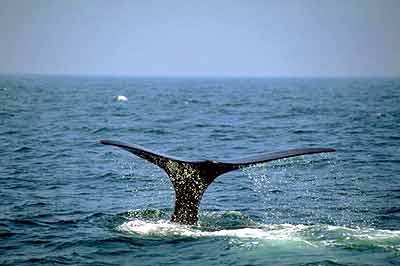 |
|
The two island Republic of Trinidad and Tobago has the biggest economy in the Eastern Caribbean and the fifth largest in the entire West Indies. Located at the extreme southern end of the Eastern Caribbean, just off the South American mainland, Trinidad and Tobago have until the past decade or so ignored tourism, relying instead on the considerable oil revenues from the 1970s. However, in the mid 1980s, oil revenues collapsed, and the country is now trying to include tourism as an important part of its future. For Tobago, which already functioned as a holiday locale for Trinidadians, the transition has been smooth but the island of Trinidad itself has less attraction to international tourists, beyond the great Carnival and calypso music. Trinidad's hotels are largely set up for businessmen, and its huge commercial port, the largest in the East Caribbean, is an industrial port. |
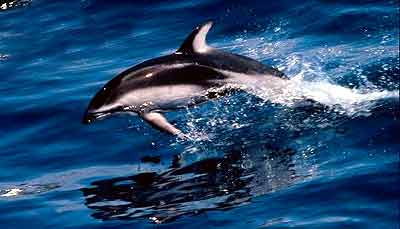 |
Despite this history, Trinidad is a big island, and does see the advantages of developing its guesthouses and smaller facilities particularly in the mountainous northern part of the island, and working to attract the nature or ecotourist, who generally spend more than the average tourist. When Trinidad was awash with oil revenues, it poured some of its money into land-based nature conservation and it retains an extensive |
|
system of nature reserves and wildlife sanctuaries, with numerous bird, bat and butterfly species. Because Trinidad was part of the South American mainland as recently as 6,000 years ago, it has many mainland species such as ocelots, peccaries, several poisonous snakes and other species that have more recently started down the evolutionary path of isolation. With its southwest coast located just seven miles (11 km) from Venezuela, Trinidad lies squarely in the outflow of the massive Orinoco River. With the huge silt loads and fresh water, this has affected the distribution of marine species and the ability to see them, particularly important for diving. Thus Tobago receives most of the diving trade, though there is some diving off the northeast coast of Trinidad. The Trinidad coast is surrounded by many mangrove forests. |
|
On the northeast tip, endangered leatherback turtles come ashore to lay their eggs, and on the east, there are manatees in the Nariva Swamp, the largest and most varied wetland on the island. There is no whale or dolphin watching at present from the island of Trinidad but there have been few surveys. Tobago naturalist David Rooks thinks that the low number of large whales may go back to World War II when whales mistaken for V boats were routinely bombed off the South American coast. The Gulf of Paria, between Trinidad and Venezuela, is considered the southernmost reach of the humpback winter migration, though this area has been little studied |
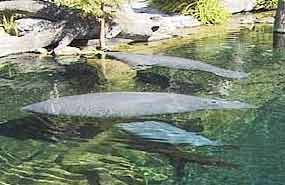 |
|
One operator surveyed for this report announced a humpback mother and calf sighting in late March 1999 but said it was uncommon. The frequency of Bryde's whale sightings off eastern Venezuela and in the Grenadines almost certainly extends to the north coast of Trinidad. Offshore fishing trawlers also report numerous small whales and dolphins including pilot whales, orcas and others. Dolphins, possibly bottlenose and/or one or more of the tropical dolphins (spotted, striped, spinner) are seen year round inshore and offshore along Trinidad's north coast as well as pilot whales (sometimes seen from the ferry between Trinidad and Tobago, some 21 miles (34 km) away to the northeast. Off the south side of the island, tucuxi dolphins can sometimes be seen. In comparison to Trinidad, Tobago, 1/15th the size, looks like a more typical Caribbean paradise island: tourist resorts, sleepy fishing villages, beaches and clear sparkling turquoise water. The lion's share of the investment in new resorts and hotels has gone into Tobago. Although tourism has climbed considerably in recent years, Tobago still has the |
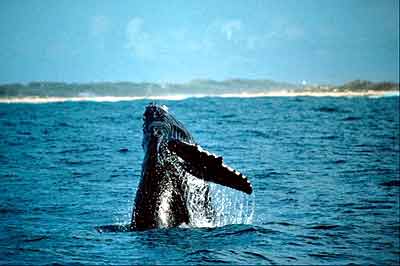 |
untrampled feel to it, including its marine diving opportunities. The best diving is around Little Tobago Island, located 2 miles (3 km) off the fishing village of Speyside in the northeast. Batteaux Bay between Little Tobago and the main island is known for huge manta rays. The eastern three quarters of Tobago is hilly, providing good views out to sea, though there are few roads or even trails to access the higher elevations. One of the best land-based views is from Flagstaff Hill. The northeast tip of Tobago has the steepest |
|
mountains with jungle slopes filled with parrots and other birds. Some of the best dive sites are just offshore in this area. The fishing village of Charlotteville, on Man O' War Bay, has one of the finest natural harbours in the Caribbean. The possibility of whale and dolphin watching would need to be explored through cetacean surveys. As there are established nature- and bird-watching tours on both Trinidad and Tobago, it might be possible to combine bird and/or turtle and whale/dolphin watching |
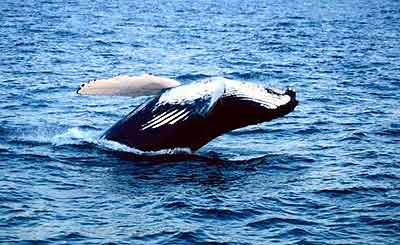 |
|
tours. The infrastructure for marine tourism, with boat charters, yacht associations, dive charter and deep sea sport fishing, provides boats that could be adapted or part-time whale watching. On Trinidad, the yachting centre of Chaguaramas Bay has the mooring and marina facilities for boats, although there are various other ports that could also be used. On Tobago, the spate of hotel building is currently ahead of the more limited air capacity, but there are plans to expand the connections which are difficult through Port of Spain to make more non-stop connections (currently available through San Juan, Puerto Rico; Grenada; and Barbados). Acknowledgments: David Rooks (Ornithologist and Nature Guide, Tobago), Richard Laydoo (Institute of Marine Affairs, Trinidad), Ward et al. in prep., Giuseppe Notarbartolo di Sciara (Tethys, ICRAM), CTO 1997. |